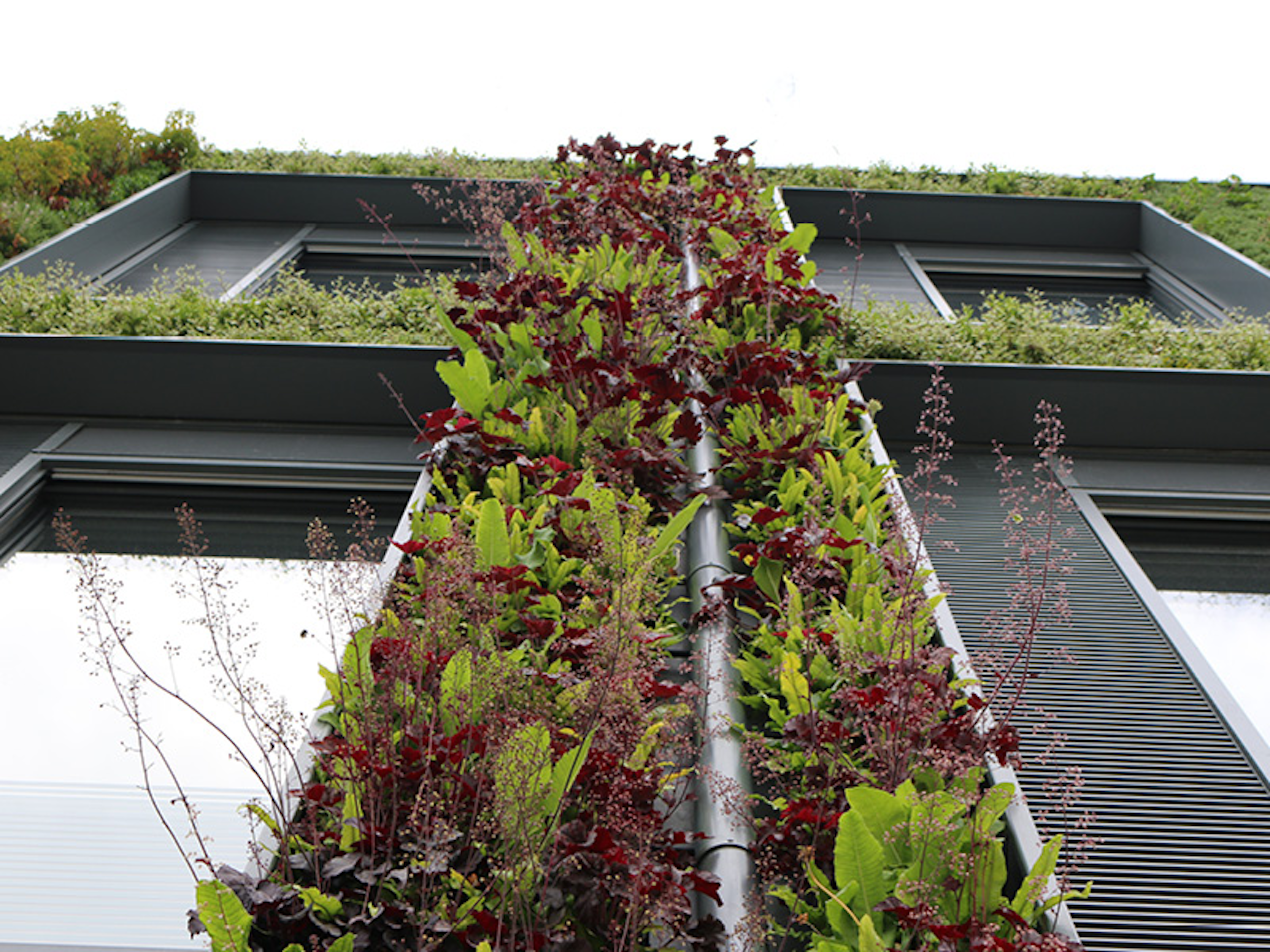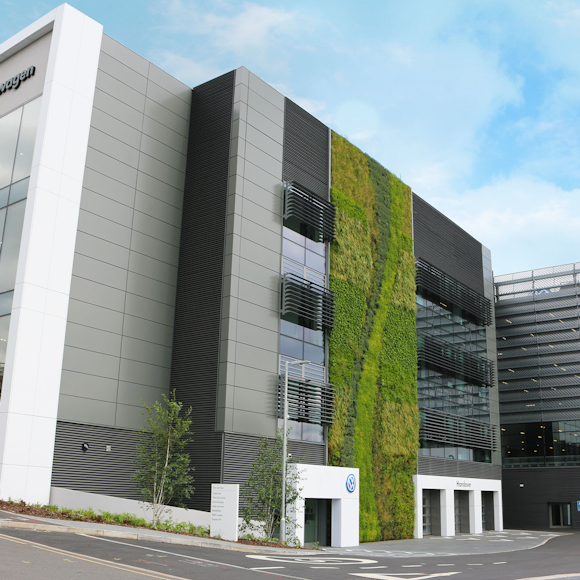Since the industrial revolution air quality both indoors and outdoors has been substantially affected by human activity. Reversing poor air quality is now something very much at the forefront of sustainable building design and recent studies have shown that green infrastructure such as green roofs and living walls can make a big impact on air quality.
Living green walls and air quality indoors
We are taught from a very young age that plants convert carbon dioxide into Oxygen, but plants do much more. By acting as natural filters, indoor plants such as those used in green walls, rid the air of pollutants and toxins that are linked to poor health. A wide variety of toxins enter our indoor environment, such as formaldehyde, VOCs, trichloroethylene, carbon monoxide and benzene to name just a few. A World Health Organization report suggested that up to 30% of new and remodelled buildings worldwide could be subject to poor indoor air quality and this is of particular concern with the increasing number of people working indoors. Indoor Living Walls can therefore play an important role in providing a healthy environment because of the sheer number of plants that go into creating a green wall.
Can green walls and green roofs improve air quality outside?
A recent study which looked at the effectiveness of green infrastructure and it’s impact on air quality, found that living green walls can indeed make a big impact on outdoor air quality. The study explored the interplay between urban form (specifically the gaps between buildings) and green wall vegetation. These gaps, know as urban street canyons, are hotspots for damaging pollutants, such as nitrogen dioxide and particulate matter, but green walls and green roofs have been shown to reduce levels by 40% for nitrogen dioxide and 60% for particulate matter.
Incorporating green walls and green roofs into building design is not only an effective way of ensuring occupants are breathing in non-toxic air, but when incorporated into the external structure of a building they can also have an incredibly positive effect on the urban environment. This type of green infrastructure is therefore a must for any architect or designer looking to incorporate sustainable building technology into the fabric of a building.


